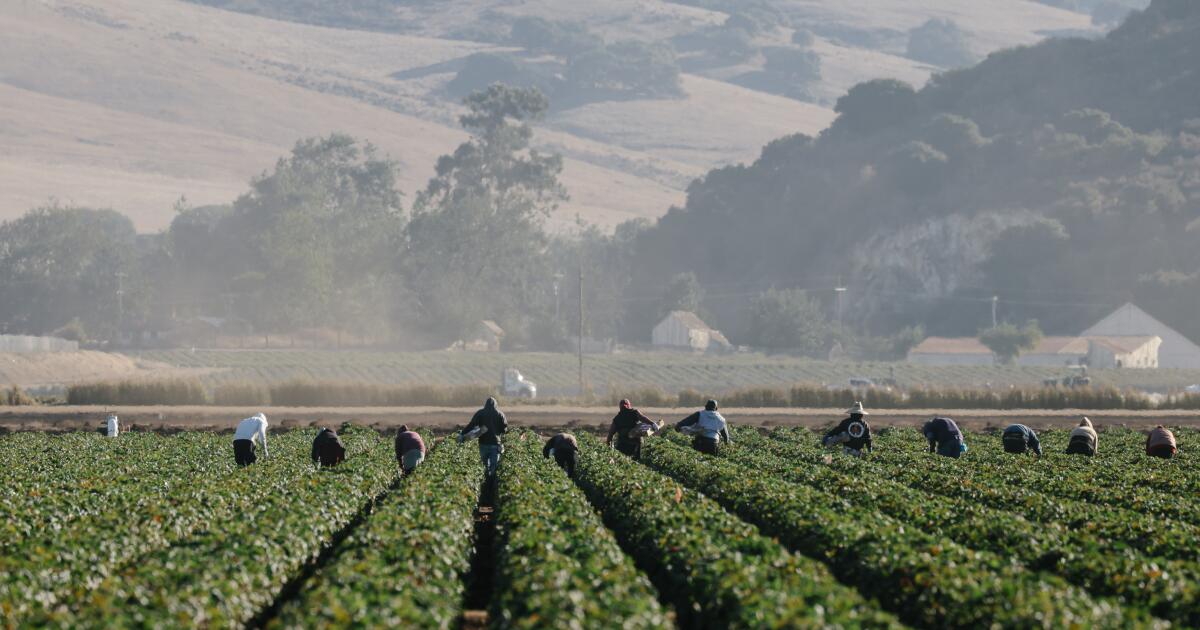A recent UC Davis study found that as Central Valley residents go about their day, they regularly breathe in pesticides, including one that has been banned in California and another whose effects on people is unclear.
The study, which was conducted in 2022 with the help of Central Valley residents, found that seven of 31 adults and one out of 11 children were exposed to detectable amounts of pesticides, including chlorpyrifos, which was banned by the state in 2020 after research showed it had a harmful neurodevelopmental effect on children.
The researchers recruited volunteers to wear backpacks with air-collection tubes for at least eight hours a day. They found that the residents were exposed to five other pesticides including 1,3-dichloropropene, also known as 1,3-D, a pesticide used to eradicate parasitic worms that has been banned in more than 20 countries, and penthiopyrad, a fungicide used to prevent mold and mildew that has not yet been studied for its effect on mammals, so the human impact is unknown.
It concluded that pesticide monitoring should be expanded because residents’ personal exposure included compounds not regularly measured in routine monitoring and that the pesticides should undergo additional toxicity testing.
“It really highlights the need that we research the health impact of all these different pesticides that are being used because people are being exposed to a range of pesticides,” said Deborah Bennett, a scientist, UC Davis professor and lead author of the study, which was published Sept. 10 in the Journal of Exposure Science and Environmental Epidemiology.
Bennett said she was surprised to find detectable amounts of chlorpyrifos because farmers were supposed to have stopped applying the pesticide. It was commonly used on alfalfa, almonds, citrus, cotton, grapes and walnuts. Before it was banned, more than 900,000 pounds of chlorpyrifos were used in 2017— more than in any other state. The primary manufacturer of the pesticide announced in 2020 that it would stop producing it due to reduced demand.
It could be that a farmer was using the last of their reserves, or the individuals who tested for chlorpyrifos might have been exposed at home with products that use the pesticide, Bennett said, but researchers were ultimately unable to determine the cause.
Leia Bailey, deputy director of communications and outreach for the state Department of Pesticide Regulation, said the agency did not have enough information to investigate the findings independently, but the department continues to enforce the ban on chlorpyrifos and maintains four air monitoring stations in areas where pesticides are used.
She added that a preliminary review of the pesticide levels cited in the study found that they were “significantly below health screening levels.” Still, Bailey said, studies like this one complement the department’s work to inform their regulatory efforts.
“Community-focused studies like this are key inputs to inform our continuous evaluation of pesticides,” Bailey said.
She added that the department requires mammalian toxicology data for all pesticide evaluations, including penthiopyrad.
Jane Sellen, co-director of the Californians for Pesticide Reform and co-author of the study, said she wasn’t surprised by the “toxic soup” of pesticides that they found through the study.
“There’s not nearly enough pesticide monitoring happening in the state,” Sellen said.
They recruited volunteers for the study in farmworking communities, and found that people were eager to participate because they wanted to know what they were being exposed to, she said. The volunteers were told to go about their regular day and wear the backpacks wherever they went, including to the grocery store, work and school. She said exposure to or illness from pesticides does not get reported as frequently as it occurs because people are afraid of being retaliated against or deported, as many farmworkers are in the U.S. without documentation.
When the researchers were recruiting volunteers, the Tulare County Agricultural Commissioner Tom Tucker issued an advisory warning farmers to be “on the lookout for people trespassing onto orchards and farms” during or immediately after pesticide applications. The advisory asked residents to call Tucker’s office or the county sheriff.
“We are concerned these individuals may attempt to enter a field or orchard during a pesticide application or immediately thereafter to utilize their air monitoring equipment in an attempt to detect pesticide spraying,” the advisory stated.
The advisory, issued June 22, 2021, cited fliers that sought volunteers to wear backpacks. But those behind the study never asked participants to trespass or go near where pesticides were being applied, Sellen said.
The state Environmental Protection Agency and Tucker later issued a joint statement clarifying the advisory and described the study as a project supported by the Air Resources Board and consistent with the Legislature’s intent to support community-led air monitoring.
“The last thing we would ever do is send anyone into harm’s way,” she said. “It was really disheartening and disappointing that [the agricultural community] was threatened by the idea of monitoring air quality in these communities.”
The communities, which were not named in the study, were in Kern, Fresno and Tulare counties, which have the highest pesticide applications in the state.

